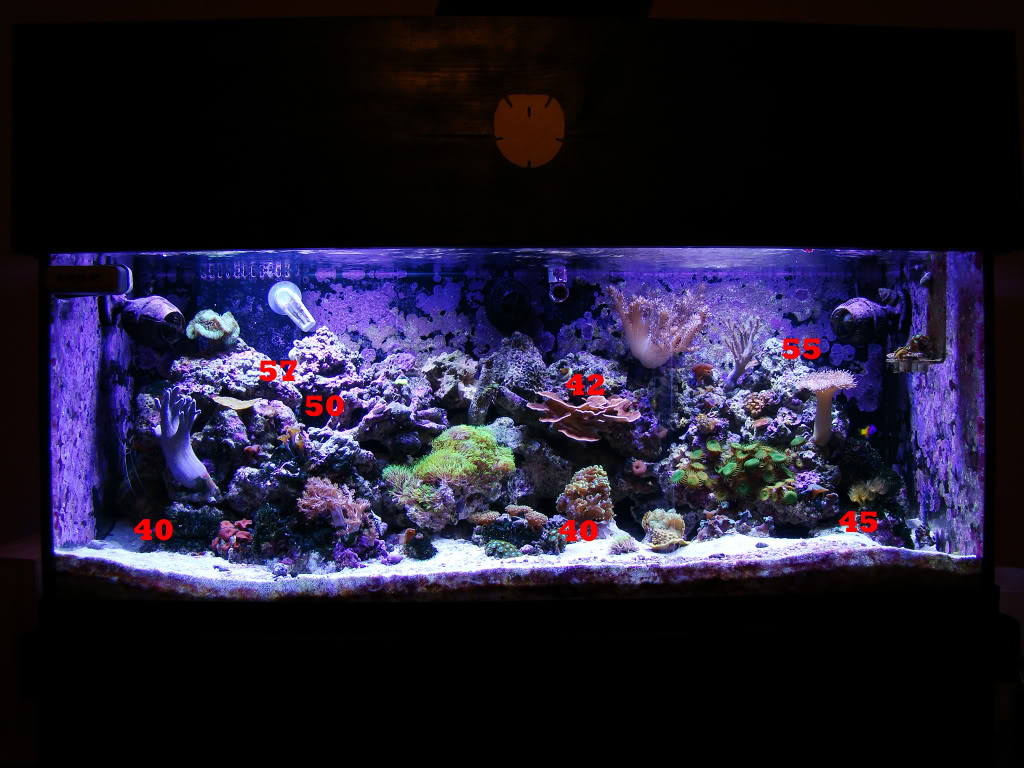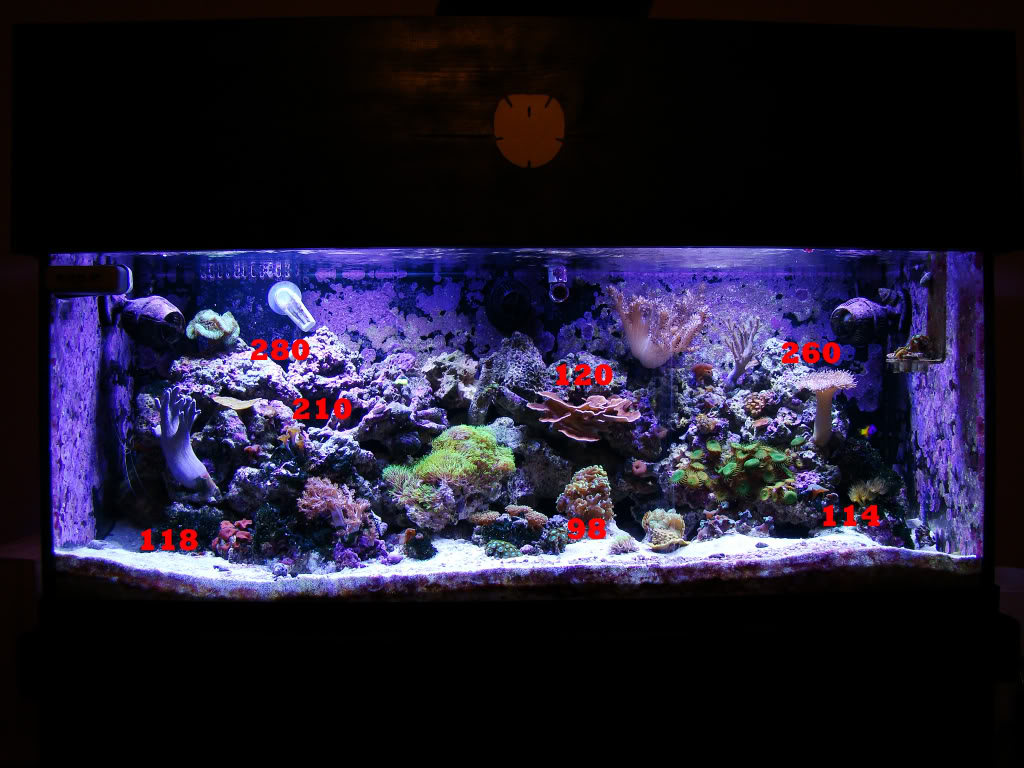Hello all!
I am new to led aquarium lighting but i am pretty experienced electronics hobbyist. So, for me is not problem to build a smart and controlled DUY lighting led system.
However, there are question on what leds to choose and how to light them up.
Let's start from the simple one
1) Methods of lighting
There basically two way to light up a led: PWM and constant current. With PWM the leds are brightly pulsed with some frequency. So, if F is 100hz and over it looks like constant light to out eye. If we make pulses shorted (for example, duty cycle of 10% on and 90% off, frequency is the same) the leds look dimmer. It is very easy to control the brightness of the leds this way and easy to do rising and setting sun effects as well as other effects. The constant current is a more sophisticated way. It actually generates constant flow of current through the leds and control the amount of this current. No pulses here.
For PWM i can do about 3-10KHZ frequency without any problems.
Now, the question is what will plants do about it? Is PWM bad for them? Will they react normally for PWM lighting methods or they need constant current way only? Or PWM is okay starting from some frequency and up?
I have not found any answer to these question anywhere. Any scientifically backed up idea from anyone?
Actually, the PWM pulses can delivery a lot higher momentary energy density than the constant current method. So, i don't the the details of the chemistry, but PWM might work worse or better that constant current method.
Anyhow, if no answer here i will just built a constant current driver or buy a chip for it.
2) LED light Spectrum
This one a lot more important. I am building this for freshwater aquarium to light freashwater plants (and if it work i will try it for usual pot plants too). So, according to this:
http://www.americanaquariumproducts...._Lighting.html
and wikipedia also (see PAR)
i mainly need two spikes: around 470 nm and around 670nm, avoid most yellow and green and avoid UVA,UVB. Better yet have a good plato covering
all from 620 to 700nm.
There we also see that they suggest white leds with hight kelvin color temperature.
But let's look at the pdf for XP-E leds from Cree.
http://www.cree.com/products/pdf/XLampXP-E.pdf
Page 6
we see the power distribution for the wavelengths.
As we see there WARM WHITE (lower color temperature) has actually a lot more energy in 620-700 nm range than cool white and its power distribution falls a lot better into 620-700 range too. The blues are lower, but we don't need much of them too. The middle section is pretty much the same for all whites.
Then why high color temp white leds are suggested if according to the graph
warm white fits better?
Also, isn't it logical to add a bit more red leds with middle spike around 670nm to add more energy in 620-700 nm range, as well as add some with 480nm spike to increase photosynthetic response? Let's say, 1 extra red led for 4 white and 1 extra blue for each 6 whites.
And one extra question: i can really put an automated scheduled UV-C range sterilizer. Is it true that it will kill the algae?
I am new to led aquarium lighting but i am pretty experienced electronics hobbyist. So, for me is not problem to build a smart and controlled DUY lighting led system.
However, there are question on what leds to choose and how to light them up.
Let's start from the simple one
1) Methods of lighting
There basically two way to light up a led: PWM and constant current. With PWM the leds are brightly pulsed with some frequency. So, if F is 100hz and over it looks like constant light to out eye. If we make pulses shorted (for example, duty cycle of 10% on and 90% off, frequency is the same) the leds look dimmer. It is very easy to control the brightness of the leds this way and easy to do rising and setting sun effects as well as other effects. The constant current is a more sophisticated way. It actually generates constant flow of current through the leds and control the amount of this current. No pulses here.
For PWM i can do about 3-10KHZ frequency without any problems.
Now, the question is what will plants do about it? Is PWM bad for them? Will they react normally for PWM lighting methods or they need constant current way only? Or PWM is okay starting from some frequency and up?
I have not found any answer to these question anywhere. Any scientifically backed up idea from anyone?
Actually, the PWM pulses can delivery a lot higher momentary energy density than the constant current method. So, i don't the the details of the chemistry, but PWM might work worse or better that constant current method.
Anyhow, if no answer here i will just built a constant current driver or buy a chip for it.
2) LED light Spectrum
This one a lot more important. I am building this for freshwater aquarium to light freashwater plants (and if it work i will try it for usual pot plants too). So, according to this:
http://www.americanaquariumproducts...._Lighting.html
and wikipedia also (see PAR)
i mainly need two spikes: around 470 nm and around 670nm, avoid most yellow and green and avoid UVA,UVB. Better yet have a good plato covering
all from 620 to 700nm.
There we also see that they suggest white leds with hight kelvin color temperature.
But let's look at the pdf for XP-E leds from Cree.
http://www.cree.com/products/pdf/XLampXP-E.pdf
Page 6
we see the power distribution for the wavelengths.
As we see there WARM WHITE (lower color temperature) has actually a lot more energy in 620-700 nm range than cool white and its power distribution falls a lot better into 620-700 range too. The blues are lower, but we don't need much of them too. The middle section is pretty much the same for all whites.
Then why high color temp white leds are suggested if according to the graph
warm white fits better?
Also, isn't it logical to add a bit more red leds with middle spike around 670nm to add more energy in 620-700 nm range, as well as add some with 480nm spike to increase photosynthetic response? Let's say, 1 extra red led for 4 white and 1 extra blue for each 6 whites.
And one extra question: i can really put an automated scheduled UV-C range sterilizer. Is it true that it will kill the algae?


